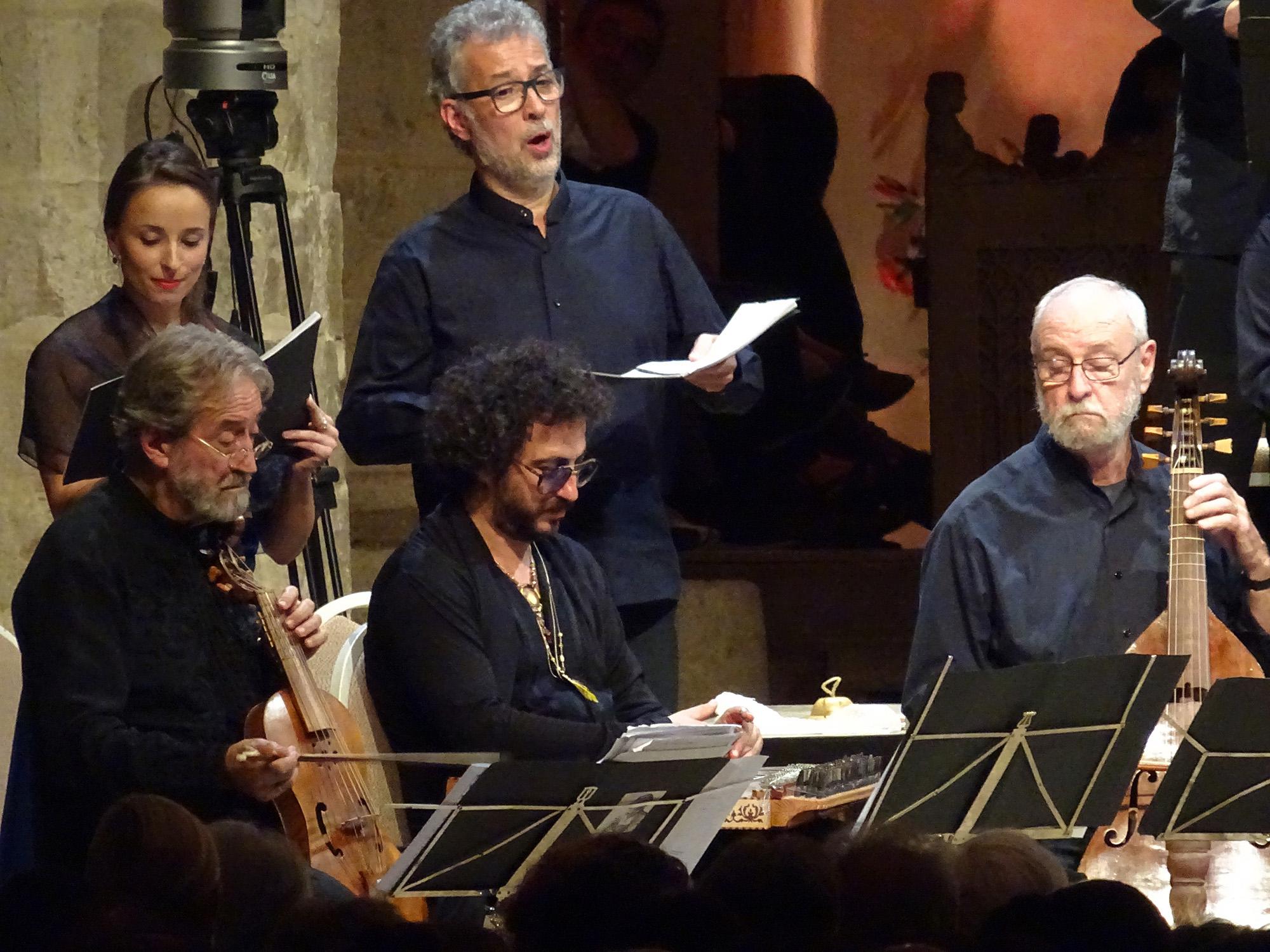Carolyn Sampson, The King’s Consort, Robert King, director
75:08
Vivat 117
[dropcap]M[/dropcap]y last encounter with Carolyn Sampson was at the Saintes Festival, where she gave a fine recital of 20th c English song (interested readers will find a report in the ‘Festival-conference’ section). Here she is on more familiar ground, singing the kind of repertoire with which she is more usually associated. The results are variable, or to borrow a sporting metaphor, something of a game of two halves.
As with the vast majority of Handel’s chamber cantatas, the four works included all date from the composer’s Italian sojourn (1706-10). The best known is Armida abbandonata, which addresses one of the most familiar topics of the genre, the woman (usually) abandoned by her lover, a conceit that allows for the expression of widely varied emotional responses. The affecting opening aria of Armida, for example, is an expression of the sorceress’ grief at the loss of Rinaldo, the emotion not without a sensual element. Not that you would know that in this performance. The excessively slow tempo adopted, coupled with Robert King’s ill-advised use of chamber organ rather than harpsichord gives the aria a pseudo-religious sentimentality closer to the English oratorios than the youthful Handel’s Italianate spirit and passion. And while nothing can detract from the familiar tonal beauty and the musicality of Sampson’s phrasing and ability to float a line, there is now too much vibrato for the voice to sustain such a funereal tempo. Throughout the CD I am disappointed, too, by the lack of ornamentation (especially trills) at cadence points, leaving far too many ‘blunt’ endings, while ornamentation in da capo repeats is not always judicious, as some ill-advised leaps above the stave testify. To return to Emanuela Galli’s beautifully fresh and committed performance of Armida in the outstanding Fabio Bonizzoni’s traversal of the Italian cantatas (Glossa) – that opening aria taken at only two thirds of King’s timing – is to enter the Ruspoli palace in Rome after a visit to the oratorios at Covent Garden some 30 years later.
I’ve concentrated in some detail on Armida and its opening aria in particular since much of what I have written applies equally to the two succeeding cantatas, Tra le fiamme and the least known on the disc, Figlio d’alte speranze, which has a moralizing text on the trope of the shepherd king and the beauties of the simple life. To be fair, no subsequent aria is treated to quite such an extreme tempo as ‘Ah, crudele’, but throughout King’s choice of a richly-textured continuo has to my mind resulted in performances that are too often plodding and wanting in rhythmic lift. Sampson does capture something of the playful spirit of Tre le fiamme, while the aria ‘Sia guida sia stella’ from Figlio is one of the joys of the CD, the simple sentiment conveyed without affectation, the slightly veiled tone utterly exquisite.
Then in Agrippina condotto a morire everything changes. Although listed as one of the chamber cantatas, it is in fact a work that is sui generis. This is not only because it has string orchestral accompaniment, but because the taut, flexible and dramatically potent alternation of recitative, aria and arioso gives an impression of an extended operatic scena more than anything else. The performance is on a different level to anything that precedes it, with Sampson especially effective in Agrippina’s often bloodthirsty outpouring of bile against her son, Nero, yet quietly heroic in the empress’ final acceptance of death. The expanded forces of the King’s Consort seem freshly energised, with playing of a vitality and rhythmic élan seldom evident elsewhere.
So, as made clear earlier, an oddly mixed bag, probably more of a draw to committed Carolyn Sampson fans than the general listener, who will find better all-round performances of most of these cantatas elsewhere.
Brian Robins
[iframe style=”width:120px;height:240px;” marginwidth=”0″ marginheight=”0″ scrolling=”no” frameborder=”0″ src=”//ws-eu.amazon-adsystem.com/widgets/q?ServiceVersion=20070822&OneJS=1&Operation=GetAdHtml&MarketPlace=GB&source=ss&ref=as_ss_li_til&ad_type=product_link&tracking_id=infocentral-21&language=en_GB&marketplace=amazon®ion=GB&placement=B07GVYD6G5&asins=B07GVYD6G5&linkId=ff154c3d13a46c4fd0cb0c69ad8e240e&show_border=true&link_opens_in_new_window=true”]
[iframe style=”width:120px;height:240px;” marginwidth=”0″ marginheight=”0″ scrolling=”no” frameborder=”0″ src=”//ws-eu.amazon-adsystem.com/widgets/q?ServiceVersion=20070822&OneJS=1&Operation=GetAdHtml&MarketPlace=DE&source=ss&ref=as_ss_li_til&ad_type=product_link&tracking_id=earlymusicrev-21&language=de_DE&marketplace=amazon®ion=DE&placement=B07GVYD6G5&asins=B07GVYD6G5&linkId=d5f9525c37299adb9d7597788d5eaf0b&show_border=true&link_opens_in_new_window=true”]
[iframe style=”width:120px;height:240px;” marginwidth=”0″ marginheight=”0″ scrolling=”no” frameborder=”0″ src=”//ws-na.amazon-adsystem.com/widgets/q?ServiceVersion=20070822&OneJS=1&Operation=GetAdHtml&MarketPlace=US&source=ss&ref=as_ss_li_til&ad_type=product_link&tracking_id=earlymusicrev-20&language=en_US&marketplace=amazon®ion=US&placement=B07GVYD6G5&asins=B07GVYD6G5&linkId=c8da289f9ee69a7c74232e37acf7c19c&show_border=true&link_opens_in_new_window=true”]
This site can only survive if users click through the links and buy the products reviewed.
We receive no advertising income or any other sort of financial support.
As an Amazon Associate I earn from qualifying purchases.
Amazon and the Amazon logo are trademarks of Amazon.com, Inc. or its affiliates.




